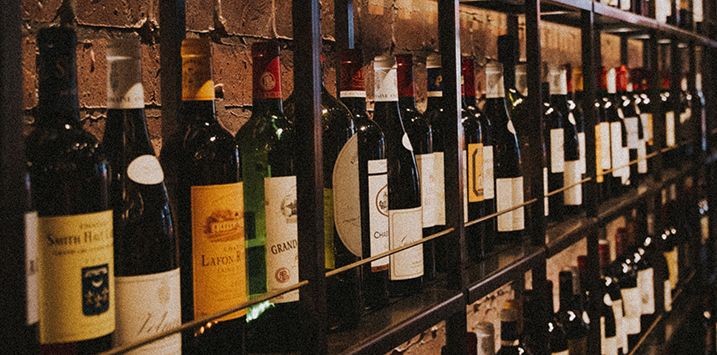
Forget inflation; wineway robbery might be here to stay
As a result of the corporatisation of restaurants, there’s a plethora of them. The emergence of the Restaurant Group – Merrivale, Bentley, and The Speakeasy Group are examples which offer a business solution to the cost of independence through bulk buying power (for food and fit-outs) and merged accounting and marketing functions.
However, with a greater restaurant supply, consumers have more choices. More choice means fewer patrons at each venue and more pressure on each restaurant to make money.
It has long been known that restaurants mark their wine lists up to help cover their overheads. They must cover glassware, staff wages, rent, inventory, wastage, electricity and gas (like all of us), the lease and other costs.
But that might not explain the vast difference in the wine markup across regions. If you visit a regional restaurant, for example, the markup might be 20 per cent or even 50 per cent, but at a Sydney or Melbourne restaurant, the markup can produce a price that is four times the price of the exact same wine in the bottle shop. Forget inflation, it’s ‘Wineway Robbery’.
There is no doubt that staff shortages, Fair Work Australia’s increased minimum wage, as well as inflating rents, wages, food and energy costs, and the consequent loss of customers who simply cannot afford to eat out, have forced many restaurants to adopt survival tactics.
But the simple fact is that many restaurants will simply charge what they think their patrons won’t notice. At $45 for a bottle, for example, you might not notice the 450 per cent markup on the $10 wholesale price that bottle cost the restaurant.
Profit margins in hospitality are notoriously thin, so maximising a restaurant’s profitability requires the ability to upsell. Wine is a very popular way to improve margins because patrons often see wine as a staple – a required accompaniment to a meal.
Hiring sommeliers or training staff to discuss a wine’s provenance are typical strategies restaurants use to sustain or improve margins by selling premium wines. More money can be made by successfully redirecting customers to a more expensive product than they initially requested, either through specials or a word from the expert.
And while massive markups on cheaper bottles are commonly accepted, restaurants have had a tougher time selling more expensive wines at massive premiums, until now. The cost of the fit-outs and the salaries are so high that many restaurants have smashed through the resistance barrier. Near 400 per cent markups for wine are common.
Recently, I dined at a restaurant as a guest of overseas friends who insisted on both the restaurant and on shouting for the experience. The weak Australian dollar made their buying power particularly powerful! Knowing a few Aussie wine producers, I was asked to choose the wine to accompany the meal. For the first time, I was genuinely shocked. The markups seemed egregious, if not offensive. I was reluctant to choose anything.
Maybe I haven’t been out often enough recently, but it seems a rocket has been put under the prices for alcohol, at least at one establishment.
Table 1. Wine markups for Pinot Noir at a Sydney restaurant (November 2023)
| Pinot Noir | Bottle Shop | Restaurant | Multiple |
| Giant Steps Apple Jack | $75 | $214 | 285% |
| Yabby Lake ‘Single Vinyard’ | $72 | $183 | 254% |
| Phillipa Farr | $52 | $192 | 369% |
| Hochkirch ‘maximus’ | $53 | $187 | 353% |
| Dr Edge ‘south’ | $53 | $174 | 328% |
| Polperro Estate | $54 | $152 | 281% |
| Gembrook Hill Estate | $63 | $184 | 292% |
| Quealy Mornington Peninsula | $35 | $93 | 266% |
| Giant Steps Yarra Valley | $35 | $119 | 340% |
| Oceans Eight | $42 | $134 | 319% |
| Holyman ‘Project X’ | $58 | $223 | 384% |
The markups highlighted in Table 1., are based on retail bottleshop prices. Most restaurants, however, will be purchasing their wines through commercial allocations, which means an even cheaper cost base and an even larger markup.
And don’t think buying ‘just a glass’ will sidestep the mark-up. You may have noticed that the wines-by-the-glass aren’t the same as those available by the bottle. That’s because those ‘by-the-glass’ bottles have been purchased at very attractive wholesale prices. In fact, it’s not unusual for the first glass to cover the cost to the restaurant of the wholesale price of the entire bottle.
While most Australians have been crying foul over the cost-of-living crisis for some time thanks to rising electricity, gas and fuel prices, it seems there’s a cohort of people dining out who haven’t noticed restaurants are feeling the pinch too and passing it on. Whatever the cause and outcome, eating out is truly a luxury experience, at least in Sydney and Melbourne. If you can dine out regularly, consider yourself fortunate. Most Australians can’t, not at those prices.